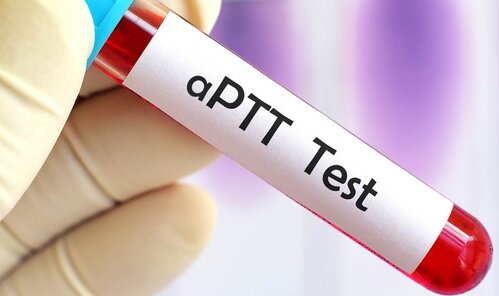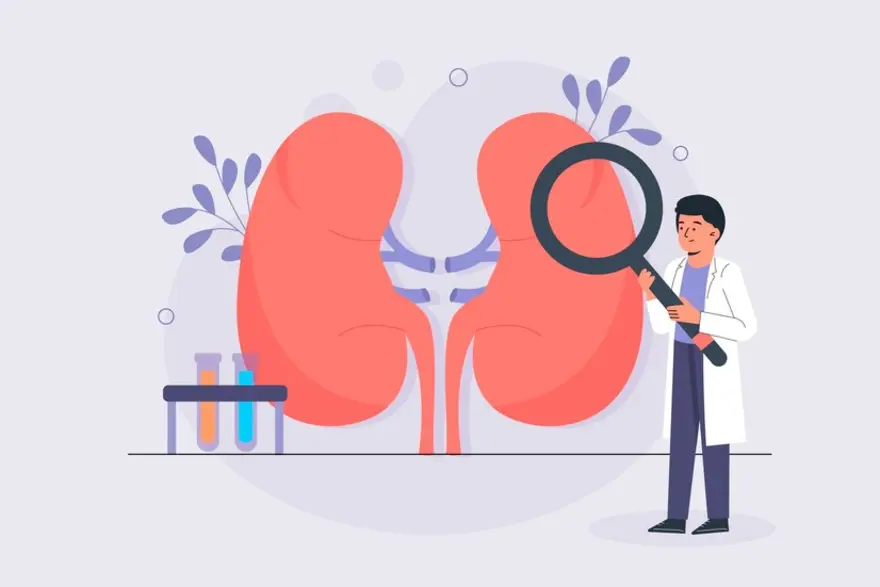Preventive Healthcare
Activated Partial Thromboplastin Time (APTT) Test: Procedure, Normal Range and Result
139088 Views
0

What is The APTT Test?
The activated partial thromboplastin time (APTT) test measures the amount of time it takes for a blood clot to form. The APTT blood test is used to monitor blood clotting in people with conditions such as haemophilia or von Willebrand's disease. It can also be used to monitor the effects of blood thinners such as heparin or warfarin (Coumadin).
Several factors can affect the APTT, including age, gender, race, and medication use. In most cases, the APTT is part of a complete blood count (CBC).
How is a Blood Clot Formed?
The clotting process occurs in two steps. First, platelets attach to the interior surface of your blood vessel walls. Then, the platelets release chemicals called clotting factors, which cause your blood to thicken and form a visible scab.
The APTT test is used to detect problems in the clotting process. These problems can occur due to:
- An issue with your blood's ability to form a clot, such as a lack of specific types of proteins called a coagulation factor.
- A lack of fresh or "proteolytic" thrombin in your blood, which is a protein that helps your blood clot.
- An issue with the platelets themselves, including an abnormally shaped or developed shape.
When is The APTT Test Recommended?
The APTT test is most often used to screen and monitor:
- Unexplained bruising or bleeding
- Thromboembolism (obstruction of a blood vessel by a blood clot)
- Recurrent miscarriages
- Chronic liver diseases
- If you have symptoms of lupus
This test is done to see if you have a certain type of blood cell disorder called autoimmune disease. These diseases include rheumatoid arthritis, lupus, and scleroderma.
An APTT blood test is commonly used to monitor D-dimer. It is a substance normally released by your body when you form a blood clot. D-dimer can be detected in your blood for up to a week after trauma, surgery, or a medical procedure.
It is a marker of your body's attempt to heal itself after the event.
How is The APTT Test Performed?
This test is performed in a doctor's office or a special lab. A small sample of blood is taken from a vein in your arm using a needle that has a tiny tube attached to it (the intravenous (IV) line).
Your doctor will ask you to change into a hospital gown so that blood can be collected.
You will be asked to lie down on your back with your feet elevated. Your doctor will place a small bandage on the area where the needle was inserted. The bandage will be removed after the test is finished.
Most blood tests are completed in a healthcare setting within 2 hours. The lab will call with the results.
The results are reported to your doctor.
How Accurate is The APTT Test?
The APTT test is considered very accurate. The level of variation among different tests is very low. This means that the results of one test are likely to be the same as another test performed on the same blood sample. The Activated Partial Thromboplastin Time is a relatively accurate test for predicting the presence of blood clots. However, it is not 100% accurate, and there are also other factors that can influence the results. For example, medications such as heparin can cause the APTT to be falsely elevated.
Results of The APTT test
- A normal APTT result is less than or equal to 35 seconds.
The APTT normal range can vary from person to person. In healthy people, the APTT can be less than 35 seconds.
- The prolonged APTT blood test indicates the presence of a low level of inflammation in your body.
If the test is prolonged, this may mean that you have lupus or a condition called Sjogren's syndrome.
In general, prolonged results are not good for your health. - A PT/APTT ratio of greater than 1.0 is associated with underlying heart disease and abnormal cardiac function; a lower ratio is considered to be within normal limits. A lower PT/APTT ratio may be found in patients who are younger and have a higher resting pulse rate.
Conclusion
If you have unexplained bruising or bleeding, are at risk for thromboembolism, or have chronic liver disease, you may need to get an activated partial thromboplastin time (APTT) test. This test measures the amount of time it takes for blood to clot and can help detect problems with the clotting process. The test is quick and easy to perform and is usually part of a complete blood count (CBC) test.If you think you may have a clotting disorder or if you are taking blood thinners, talk to your doctor about getting an APTT test. This will make sure that you are getting the treatment you need.













1701259759.webp)









 WhatsApp
WhatsApp